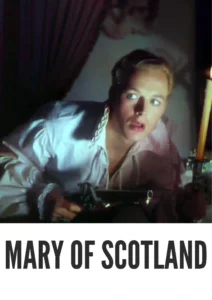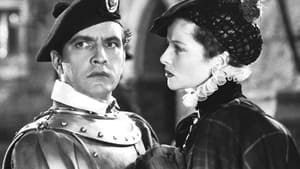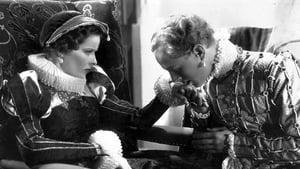Video Sources 0 Views

Synopsis
Passion, Politics, and Power: Mary of Scotland (1936) in Spectacular Color

Immerse yourself in the tumultuous world of 16th-century royalty with Mary of Scotland, a powerful historical drama from 1936, now beautifully colorized for a richer, more engaging viewing experience. Starring Katharine Hepburn, this film explores the intense conflicts and tragic fate of Mary, Queen of Scots. Perfect for lovers of historical epics and classic cinema, this HD download brings a legendary story to life with stunning visual clarity. The movie has also been released under other titles.
Mary of Scotland Storyline: A Queen’s Struggle for Love and Power
Mary of Scotland tells the story of Mary Stuart (Katharine Hepburn), the Queen of Scotland, as she navigates the treacherous political landscape of her time. Returning to Scotland after the death of her husband, the King of France, Mary faces numerous challenges to her throne, including opposition from the Scottish lords and the looming threat of her cousin, Queen Elizabeth I of England.As Mary attempts to secure her reign and find love, she becomes entangled in a series of political intrigues and personal betrayals. Her passionate affair with the Earl of Bothwell (Fredric March) further complicates matters, leading to scandal and rebellion. The film portrays Mary as a complex and sympathetic figure, torn between her duties as a queen and her desires as a woman. Ultimately, Mary of Scotland is a sweeping historical drama that explores themes of love, ambition, and sacrifice in a world of ruthless power struggles.
Movie Cast
The film boasts a stellar cast of actors who bring these historical figures to life:
- Katharine Hepburn as Mary Stuart, Queen of Scotland
- Fredric March as James Hepburn, Earl of Bothwell
- Florence Eldridge as Queen Elizabeth I of England
- Douglas Walton as Lord Darnley
- John Carradine as David Rizzio
Movie Genre
Mary of Scotland falls into the genre of historical drama, with elements of romance and tragedy that are characteristic of classic Hollywood epics. Its grand scale and attention to historical detail make it a captivating and immersive film.
Historical Context: Hollywood’s Golden Age and Historical Dramas
Released in 1936, Mary of Scotland reflects the popularity of historical dramas during Hollywood’s Golden Age. These films often combined lavish production values with compelling stories of love, heroism, and betrayal. Mary of Scotland is notable for its focus on a strong female protagonist and its exploration of complex political and personal themes. The film also reflects the growing interest in British history and culture among American audiences.
Colorization Details
This colorized version of Mary of Scotland has been meticulously restored using state-of-the-art digital techniques, enhancing the visual impact while respecting the film’s original artistic vision. The colorization process involved detailed analysis of historical sources and artistic references to ensure accuracy and authenticity. The result is a vibrant and immersive viewing experience that brings new life to the characters and settings, making the story even more engaging for contemporary audiences. While debates about colorizing classic films continue, this version aims to introduce Mary of Scotland to a wider audience, preserving its legacy for future generations.
Technical Details
- Director: John Ford
- Screenplay: Dudley Nichols
- Based on: the play by Maxwell Anderson
- Cinematography: Joseph H. August
- Edited by: Jane Loring
- Production Company: RKO Radio Pictures
- Distributed by: RKO Radio Pictures
- Runtime: 123 minutes
Technical Specifications
- Download Format: MP4
- Resolution: HD (1080p)
- Compatibility: Compatible with most devices, including smartphones, tablets, computers, and smart TVs.
Reviews and Critical Reception
Mary of Scotland (1936) received mixed reviews upon its release, with some critics praising its performances and historical accuracy, while others found it overly theatrical and melodramatic. Despite the mixed reception, the film was a commercial success and has since become a classic of the historical drama genre. Mary of Scotland remains a compelling and visually stunning portrayal of one of history’s most fascinating figures.
FAQs
- Q: What is Mary of Scotland about?
- A: Mary of Scotland is a historical drama about the life and reign of Mary Stuart, Queen of Scotland.
- Q: Is Mary of Scotland (1936) a well-known film?
- A: Yes, Mary of Scotland is considered a classic of the historical drama genre and is known for its performances and grand scale.
- Q: Is this version of Mary of Scotland colorized?
- A: Yes, this version has been professionally colorized to enhance the viewing experience.
- Q: What makes Mary of Scotland interesting for film fans?
- A: Mary of Scotland offers a compelling portrayal of a complex historical figure and showcases the talents of a stellar cast and crew.
- Q: What is the download format?
- A: The download format is MP4, which is compatible with most devices.
- Q: What resolution is the download?
- A: The resolution is HD (1080p), providing a high-quality viewing experience.
Download Now in HD!
Watch Mary of Scotland Today!












